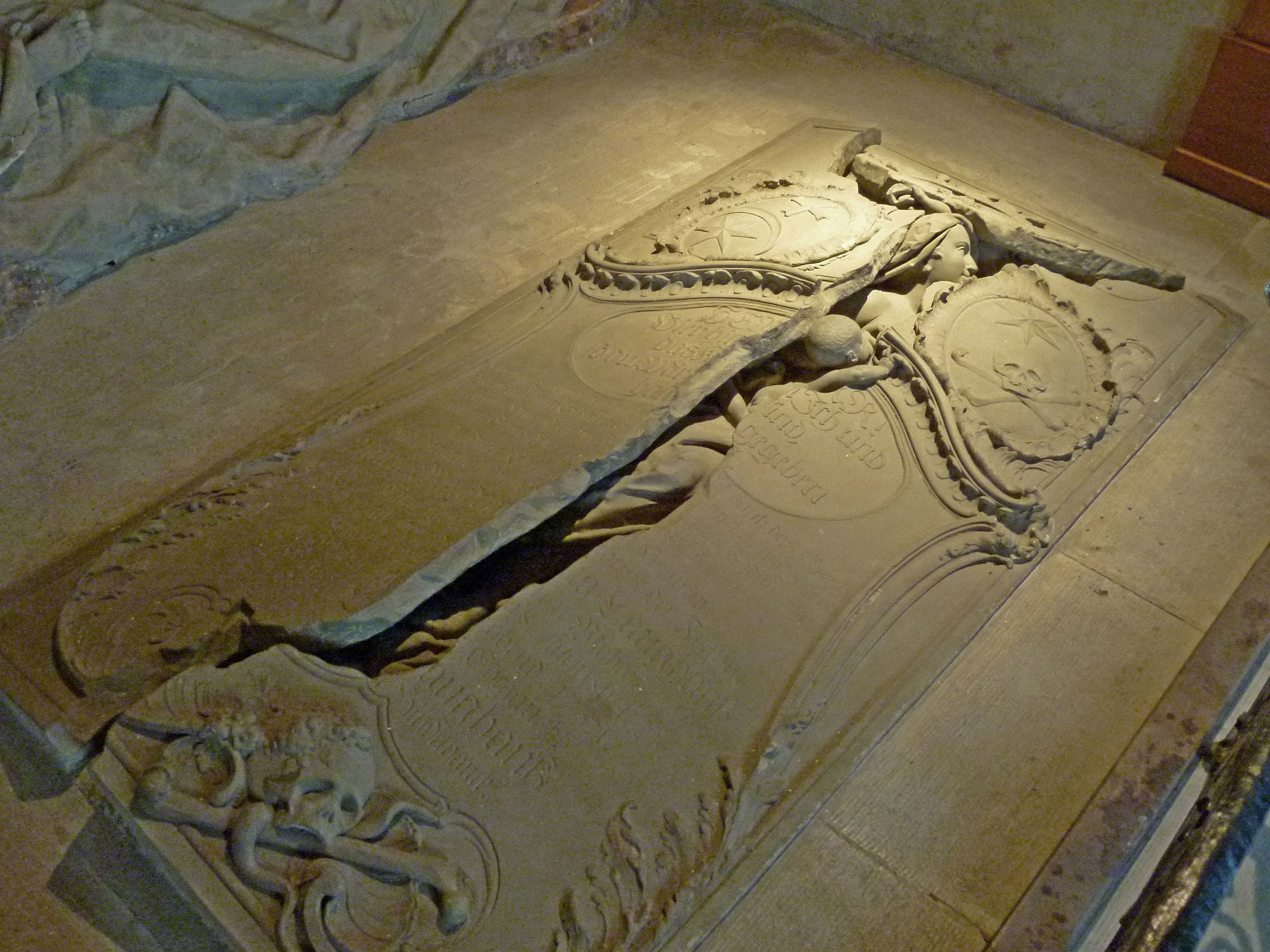How a Zombie Mom Became an Art History Star
 |
| Johann August Nahl, Tomb of Maria Magdalena Langhans, 1751. Church of Hindelbank, Bern canton, Switzerland |
Maria Madgalena Langhans, the 28-year-old wife of a Swiss pastor, died in childbirth on Easter Sunday 1751. Her husband commissioned German sculptor Johann August Nahl (1710-1781) to create a suitable tomb. Nahl's sandstone composition showed mother and child breaking out of the crypt (the sculpture itself) at resurrection. The blend of meta and schmaltz impressed Goethe, Schopenhauer, and James Fenimore Cooper. Nahl's tomb became a touchstone of the incipient Romantic movement. Mary Shelley would have been aware of it when she wrote Frankenstein in the rainy Swiss summer of 1816. Shelley foregrounded the creepiness of literal reanimation. That high concept still fuels Hollywood franchises and Halloween kitsch.
Maria Madgalena Langhans' tomb also plays a role the history of taste. Nahl is hardly remembered outside of Germany and Switzerland, but for a time his Langhans tomb was an essential stop on any European grand tour, as worthy of contemplation as masterworks of Michelangelo and Bernini. Those who saw Nahl's monument in the village church of Hindelbank, near Bern, wanted souvenirs. Prints were legion, as were small sculptural reproductions in terracotta and porcelain.
 |
| Niderviller Porcelain version of Tomb of Maria Magdalena Langhans, about 1780. LACMA |
In 2002 LACMA bought a porcelain replica made by the Niderviller (France) Manufactory. This year the Getty acquired a somewhat later, larger (18.3 in) version by the Swiss Nyon Porcelain Manufactory as part of a group purchase of porcelain objects from France, Germany, and Switzerland. The Nyon model is attributed to Johann Valentin Sonnenschein.
 |
| Nyon Manufactory, Tomb of Maria Magdalena Langhans, about 1785. J. Paul Getty Museum |
One of the most elaborate homages is a full-size copycat tomb in Britain, made for a Victorian pastor whose wife and child died of smallpox. "The quality of the monument is good," says the U.K.'s Church Monuments Society, "but the whole has most bizarre effect, resembling the worst type of zombie film."
 |
| James Forsyth, Monument to Madelina Lance (detail), 1861. Church of The Blessed Virgin Mary, Buckland St. Mary, U.K. |

Comments
I'd take that over the stone original and ceramic repros any day.
There's a monograph on him at the Watson Library, which I will check out:
Author: Stevens, Moreland L
Title: Charles Christian Nahl : artist of the Gold Rush, 1818-1878 : [exhibition catalogue] / Moreland L. Stevens, with the assistance of Marjorie Arkelian ; [edited by Richard V. West ; with additional contributions by Roger D. Clisby, Susan Franz Lake, and the editor]
Publication Info: Sacramento, Calif. : E. B. Crocker Art Gallery, 1976
Thanks for sharing.
> fleeting as life itself.
Correct. Throw in the way that cultural fads and political dynamics come and go, and, voila, today's trendiness is tomorrow's "yeech." Or visa versa.
Moreover, recall how Mao Tse-tung's Cultural Revolution in the 1960s affected hundreds of millions of people---for decades. Mao and his social circle (eg, Mao's wife Jiang Qing) had a way of judging taste and history (which included the arts and culture) that upended generations of people before them.
"In Los Angeles, you can wander through Judy Baca murals at the cavernous Geffen Contemporary at MOCA, view “Beetlejuice” at the sphere-like David Geffen Theater at the Academy Museum, watch “The Inheritance” at the Geffen Playhouse, and follow the progress of the new David Geffen Galleries, a striking work of architecture that will span Wilshire Boulevard, at the Los Angeles County Museum of Art."
... We also learn in the article that Geffen likes to donate to "transformative cultural projects" where he trusts that the architect and the beneficiaries will do "something great."
https://www.nytimes.com/2022/10/30/arts/music/david-geffen-hall-philanthropy.html
A number of his paintings are on display at the Crocker Art Museum in Sacramento--they were commissioned by Judge E.B. Crocker and his wife Margaret in the late 1860s and early 1870s. I sort of like his painting "The Fandango", which depicts a fiesta on a rancho in California during the Mexican era.